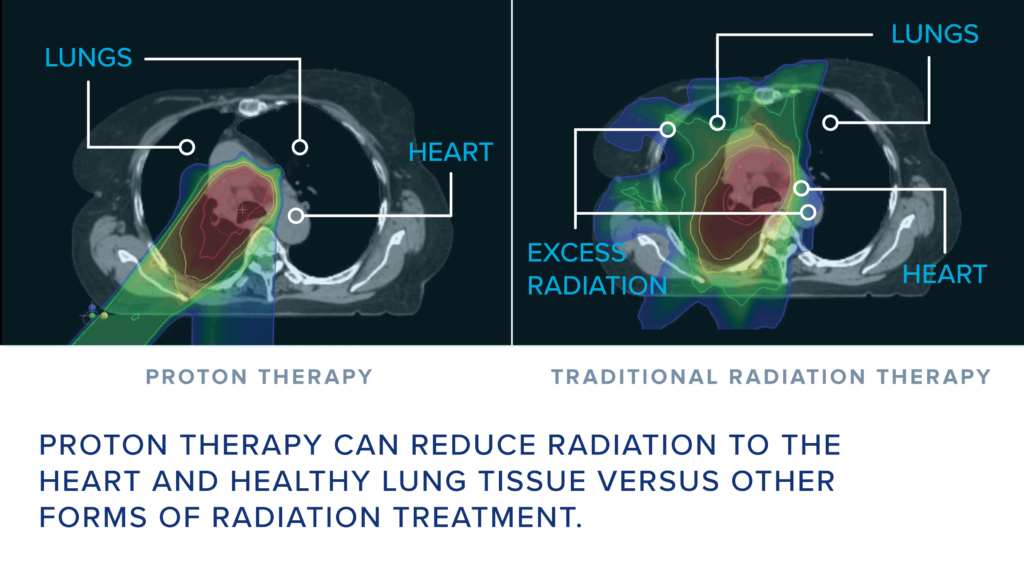Lung cancer is a type of cancer that begins in the cells of the lungs. It is one of the most common and deadliest forms of cancer worldwide. Lung cancer can be broadly categorized into two main types:
- Non-Small Cell Lung Cancer (NSCLC): NSCLC is the most common type of lung cancer, accounting for approximately 85% of all cases. It is further divided into several subtypes, including adenocarcinoma, squamous cell carcinoma, and large cell carcinoma. NSCLC tends to grow and spread more slowly than small cell lung cancer and is often diagnosed at an advanced stage.
- Small Cell Lung Cancer (SCLC): SCLC accounts for about 15% of all lung cancer cases. It is known for its rapid growth and early spread to other parts of the body. SCLC is strongly associated with smoking and is often diagnosed at an advanced stage.
Risk Factors:
- Tobacco Use: Smoking cigarettes or exposure to secondhand smoke is the leading cause of lung cancer. It is responsible for a significant majority of lung cancer cases.
- Radon Gas: Exposure to radon, a naturally occurring radioactive gas that can accumulate in buildings, is another significant risk factor for lung cancer.
- Occupational Exposure: Certain workplaces, such as those in the construction, mining, and manufacturing industries, may have higher levels of carcinogens (cancer-causing substances) that can increase the risk of lung cancer.
- Family History: A family history of lung cancer can increase the risk, suggesting a possible genetic predisposition.
- Air Pollution: Long-term exposure to air pollution, including fine particulate matter and other pollutants, can be associated with a higher risk of lung cancer.
- Personal History of Lung Disease: Individuals with a history of chronic obstructive pulmonary disease (COPD) or pulmonary fibrosis may have an increased risk.
These tumors occur when cancer cells from other parts of the body (e.g., lung, breast, colon) spread to the brain through the bloodstream or lymphatic system. Metastatic brain tumors are more common than primary brain tumors.
Symptoms
Symptoms of lung cancer can vary depending on the stage and type of cancer but may include:
- Persistent cough, often with blood.
- Chest pain that worsens with deep breathing or coughing.
- Shortness of breath.
- Hoarseness.
- Unintended weight loss.
- Fatigue.
- Recurrent lung infections, such as pneumonia or bronchitis.
- Swelling in the neck or face.
- Bone pain.
- Headaches.
Lung cancer is typically diagnosed through a combination of imaging studies (such as chest X-rays and CT scans) and diagnostic procedures, including bronchoscopy, needle biopsy, and sputum cytology. Once diagnosed, treatment options for lung cancer may include surgery, chemotherapy, radiation therapy, targeted therapy, immunotherapy, or a combination of these modalities. The choice of treatment depends on the type and stage of the cancer, as well as the patient’s overall health.
Early detection through lung cancer screening for high-risk individuals, such as current or former smokers, can improve the chances of successful treatment and a better prognosis. Smoking cessation and avoiding exposure to tobacco smoke and other environmental carcinogens are essential for preventing lung cancer.
Diagnosis
Lung cancer is diagnosed through a series of medical tests and procedures designed to detect the presence of cancer, determine its type and stage, and guide treatment decisions.
Treatment
The treatment of lung cancer depends on several factors, including the type of lung cancer (non-small cell lung cancer or small cell lung cancer), the stage at diagnosis, the location and size of the tumor, the patient’s overall health, and individual preferences. Treatment options for lung cancer may include one or a combination of the following modalities:
- Surgery: Surgical intervention may be considered for patients with early-stage lung cancer or certain localized tumors.
- Radiation Therapy: Radiation therapy uses high-energy X-rays to target and destroy cancer cells. It may be used before surgery (neoadjuvant radiation therapy) to shrink tumors, after surgery (adjuvant radiation therapy) to eliminate any remaining cancer cells, or as a primary treatment for inoperable or advanced lung cancer. Techniques such as stereotactic body radiation therapy (SBRT) may be used for small, localized tumors.
- Chemotherapy: Chemotherapy involves the use of drugs to kill cancer cells or inhibit their growth. It is often used in combination with surgery or radiation therapy for certain stages of lung cancer. For advanced or metastatic lung cancer, chemotherapy may be used as a primary treatment.
- Targeted Therapy: Targeted therapy drugs are designed to target specific molecules or pathways involved in cancer growth. They are used for specific types of non-small cell lung cancer (NSCLC) with genetic mutations or alterations, such as EGFR mutations, ALK rearrangements, ROS1 rearrangements, and others. Targeted therapies can be highly effective and have fewer side effects than traditional chemotherapy.
- Immunotherapy: Immunotherapy drugs, such as immune checkpoint inhibitors (e.g., pembrolizumab, nivolumab, atezolizumab), work by stimulating the immune system to recognize and attack cancer cells. Immunotherapy has become a significant treatment option for advanced NSCLC, particularly when other treatments have not been successful.
- Supportive Care: Managing symptoms, controlling pain, and improving quality of life are important aspects of treatment.
The choice of treatment depends on the type, stage, and location of the cancer, as well as the patient’s overall health. Treatment plans are often customized to address the unique characteristics of each case. Multidisciplinary teams of healthcare providers collaborate to develop and implement the most appropriate treatment approach for each patient.
PROTON THERAPY HAS PROVEN CLINICAL RESULTS
Research shows that proton therapy is as effective as X-ray radiation in treating non-small cell lung cancer and may reduce side effects such as inflammation of the lungs (pneumonitis) and esophagus (esophagitis). Due to the precise nature of proton therapy treatment, your healthy heart, esophagus, spinal cord and lung tissues receive limited exposure to harmful radiation. Proton therapy has also been shown to have higher remission rates and a lower risk of secondary cancer than traditional radiation treatment.
